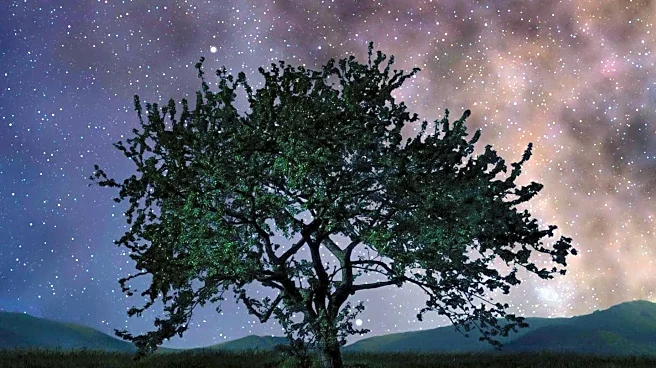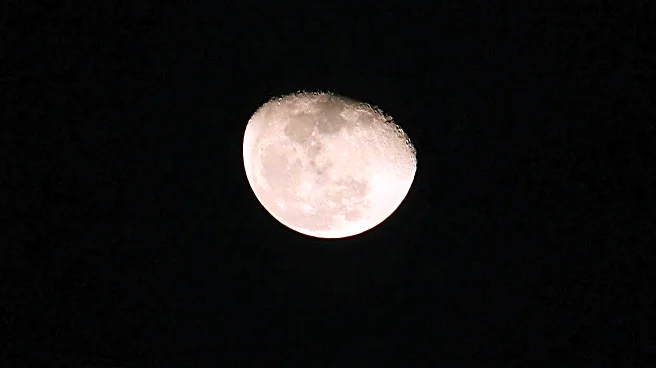What's Happening?
On November 3, 2025, Venus and Spica, the brightest star in the constellation Virgo, will be visible together in the early morning sky. This celestial event occurs approximately one hour before sunrise,
with both celestial bodies rising in the east. Venus, known for its brightness, will outshine Spica significantly, with a magnitude of -3.9 compared to Spica's magnitude of 1.0. Observers using telescopes will be able to see Venus's disk, which is 96 percent illuminated, although only its thick cloud layer will be visible. This event is part of a series of notable sky occurrences, including Neptune's positioning between Saturn and the Moon on November 2.
Why It's Important?
This alignment of Venus and Spica provides a unique opportunity for astronomers and sky enthusiasts to observe two bright celestial bodies in close proximity. Such events are significant for educational purposes, offering a chance to engage the public in astronomy and increase awareness of celestial phenomena. The visibility of Venus, with its bright glow, serves as a reminder of the dynamic nature of our solar system and the ongoing dance of planets and stars. This event also highlights the importance of clear skies and minimal light pollution for optimal stargazing experiences.
What's Next?
Following this event, sky watchers can look forward to other celestial occurrences throughout November 2025. The month promises a variety of astronomical events, including the transition of Mercury from evening to morning visibility and the dominance of giant planets in the night sky. These events provide ongoing opportunities for observation and study, encouraging both amateur and professional astronomers to continue exploring the wonders of the universe.
Beyond the Headlines
The alignment of Venus and Spica not only captivates those interested in astronomy but also underscores the cultural and historical significance of celestial events. Throughout history, such alignments have been used for navigation, timekeeping, and as inspiration in art and literature. The continued observation of these events fosters a connection between modern society and ancient practices, highlighting the timeless fascination with the stars.













